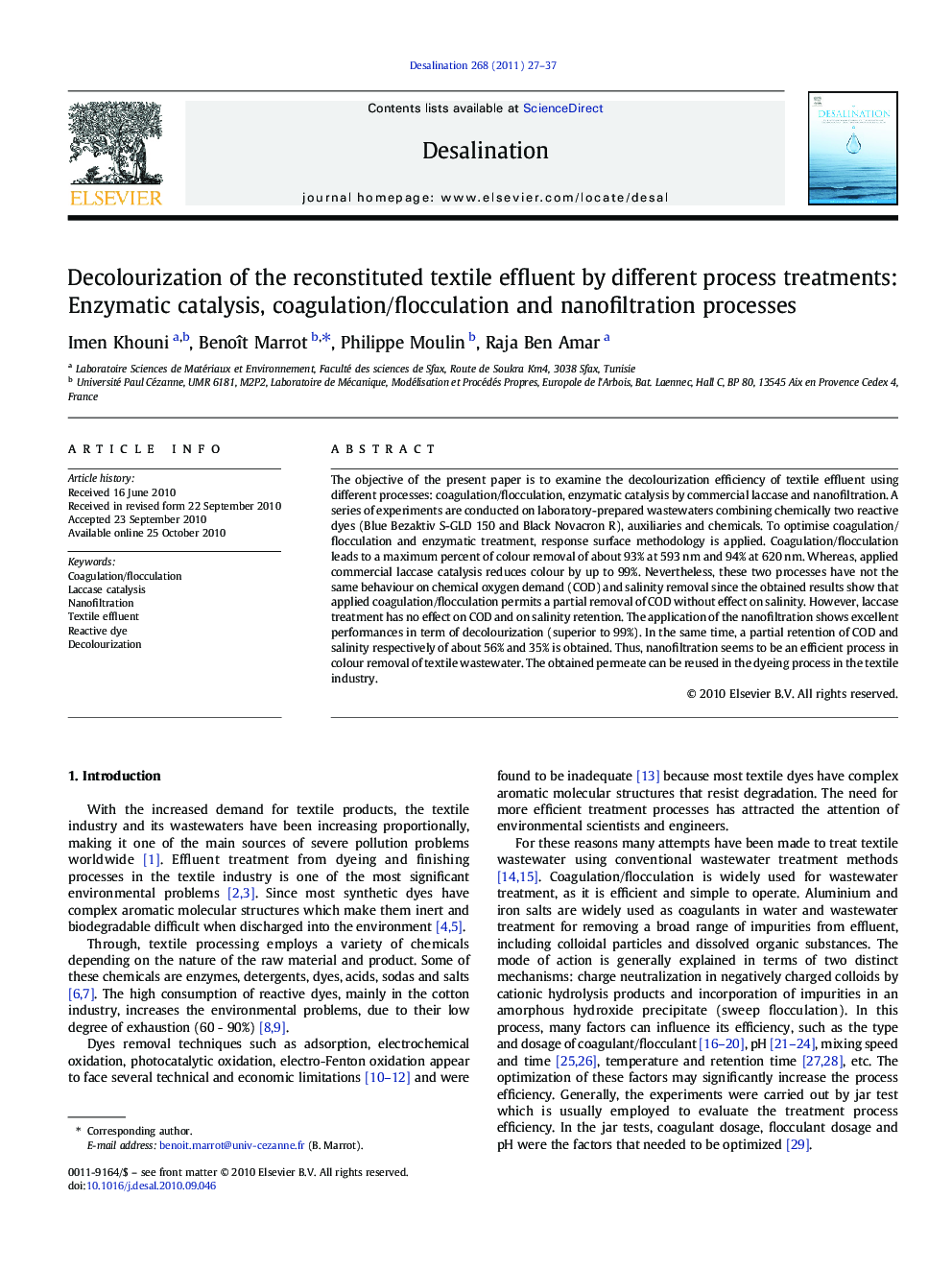| کد مقاله | کد نشریه | سال انتشار | مقاله انگلیسی | نسخه تمام متن |
|---|---|---|---|---|
| 625461 | 1455423 | 2011 | 11 صفحه PDF | دانلود رایگان |

The objective of the present paper is to examine the decolourization efficiency of textile effluent using different processes: coagulation/flocculation, enzymatic catalysis by commercial laccase and nanofiltration. A series of experiments are conducted on laboratory-prepared wastewaters combining chemically two reactive dyes (Blue Bezaktiv S-GLD 150 and Black Novacron R), auxiliaries and chemicals. To optimise coagulation/flocculation and enzymatic treatment, response surface methodology is applied. Coagulation/flocculation leads to a maximum percent of colour removal of about 93% at 593 nm and 94% at 620 nm. Whereas, applied commercial laccase catalysis reduces colour by up to 99%. Nevertheless, these two processes have not the same behaviour on chemical oxygen demand (COD) and salinity removal since the obtained results show that applied coagulation/flocculation permits a partial removal of COD without effect on salinity. However, laccase treatment has no effect on COD and on salinity retention. The application of the nanofiltration shows excellent performances in term of decolourization (superior to 99%). In the same time, a partial retention of COD and salinity respectively of about 56% and 35% is obtained. Thus, nanofiltration seems to be an efficient process in colour removal of textile wastewater. The obtained permeate can be reused in the dyeing process in the textile industry.
Graphical AbstractFigure optionsDownload as PowerPoint slideResearch Highlights
► Under optimal condition of process parameters, coagulation/flocculation can remove colour from reconstituted textile effluent based on BNR or BB150 with very high percentage of efficiency (> 94%).
► Commercial laccase can be used for treating textile dyeing wastewaters, particularly for water recycling.
► NF has proved an efficient process to remove dyes from reconstituted textile effluents.
Journal: Desalination - Volume 268, Issues 1–3, 1 March 2011, Pages 27–37